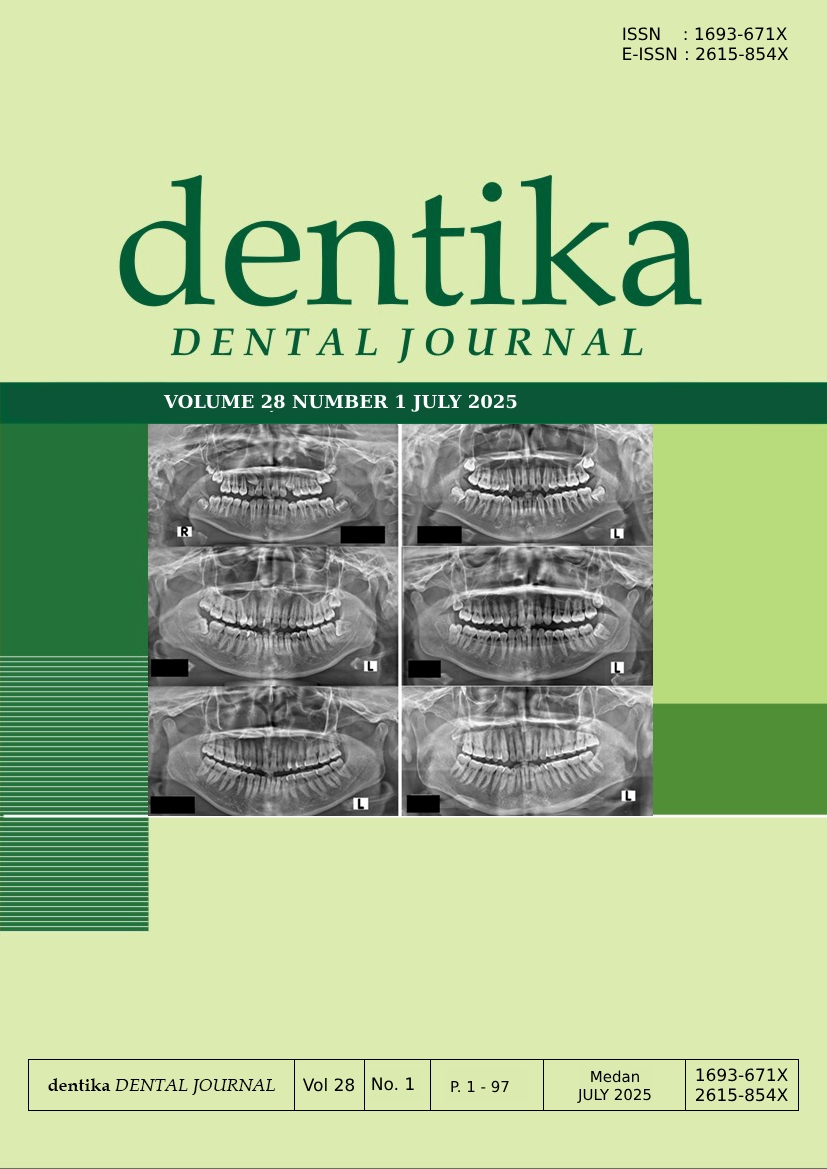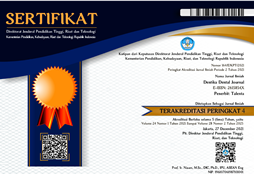Differences in Fractal Analysis Values for Batak Tribe based on Age Groups in terms of Panoramic Radiograph
-
DOI:
https://doi.org/10.32734/dentika.v28i1.19769Keywords:
Fractal Analysis Values, Panoramic Radiograph, AgeAbstract
Mandibular growth and development are often used as indicators of age. Dentists perform fractal analysis using panoramic radiographs to assess mandibular bone density during its growth and development. Therefore, this study aimed to determine the differences in the mean of fractal analysis values of individuals from the Batak Tribe using a panoramic radiograph. The method used was a cross-sectional design comprising 120 panoramic radiographs. Based on age category, the radiographs were divided equally into Groups 1 (ages 6-12 years), 2 (13-18 years), 3 (19-24 years), 4 (25-35 years), 5 (36-45 years) and 6 (45-60 years). ImageJ software was used to measure density, and data analysis was performed using one-way ANOVA and LSD statistical tests. The highest to lowest mean of right and left fractal analysis values were observed in groups 4, 5, 3, 6, 2, and 1, respectively. The results showed significant differences in fractal analysis value across age groups within the Batak Tribe based on panoramic radiograph assessments.
Downloads

Downloads
Published
How to Cite
Issue
Section
License
Copyright (c) 2025 Maria Novita Helen Sitanggang, Ervina Sofyanti, Ika Astrina, Lisna FN

This work is licensed under a Creative Commons Attribution-ShareAlike 4.0 International License.

















